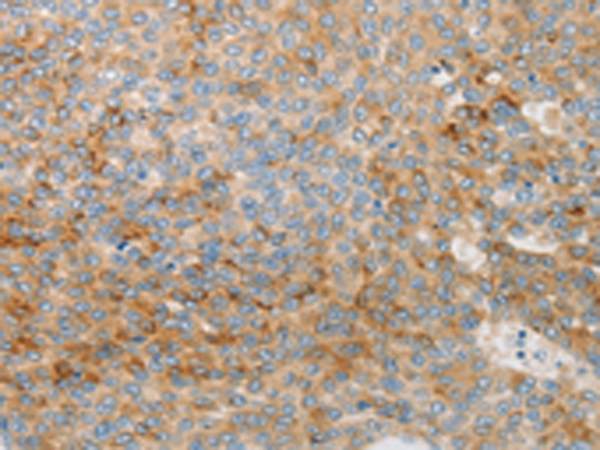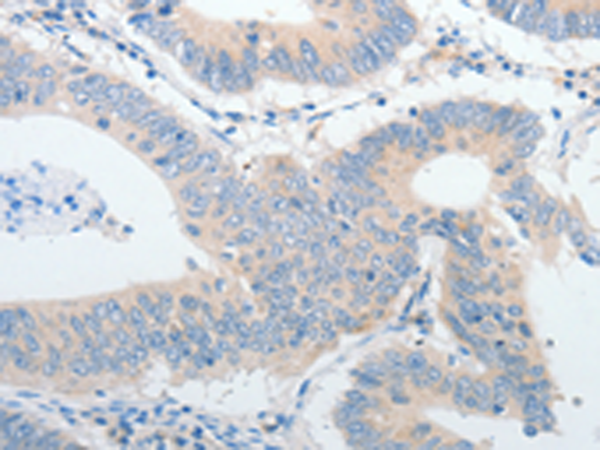


| WB | 1/500-1/2000 | Human,Mouse,Rat |
| IF | 咨询技术 | Human,Mouse,Rat |
| IHC | 1/25-1/100 | Human,Mouse,Rat |
| ICC | 技术咨询 | Human,Mouse,Rat |
| FCM | 咨询技术 | Human,Mouse,Rat |
| Elisa | 1/2000-1/5000 | Human,Mouse,Rat |
| Aliases | AFBP, IBP1, PP12, IGF-BP25, hIGFBP-1 |
| WB Predicted band size | 28 kDa |
| Host/Isotype | Rabbit IgG |
| Antibody Type | Primary antibody |
| Storage | Store at 4°C short term. Aliquot and store at -20°C long term. Avoid freeze/thaw cycles. |
| Species Reactivity | Human, Mouse |
| Immunogen | Synthetic peptide of human IGFBP1 |
| Formulation | Purified antibody in PBS with 0.05% sodium azide and 50% glycerol. |
+ +
以下是关于STX11抗体的3篇文献概览(基于公开研究整理,部分为示例性内容):
---
1. **文献名称**:*Mutations in STX11 encoding a SNARE protein critical for cytotoxic granule exocytosis cause familial hemophagocytic lymphohistiocytosis type 4*
**作者**:Zur Stadt U, et al. (2005)
**摘要**:该研究首次将STX11基因突变与家族性噬血细胞性淋巴组织细胞增多症(FHL4)相关联。研究中开发了针对STX11的特异性抗体,用于检测患者细胞中STX11蛋白的表达缺失,证实其突变导致细胞毒性颗粒分泌缺陷。
---
2. **文献名称**:*Syntaxin 11 regulates the cell surface expression of CD63 in hematopoietic cells*
**作者**:Côte M, et al. (2009)
**摘要**:通过免疫共沉淀和Western blot(使用STX11抗体),揭示了STX11与CD63在免疫细胞中的相互作用,表明STX11参与调控溶酶体相关膜蛋白的膜转运,进一步解释其在免疫缺陷疾病中的作用机制。
---
3. **文献名称**:*Development of a monoclonal antibody-based ELISA for detecting STX11 deficiency in FHL diagnosis*
**作者**:Yanagi S, et al. (2012)
**摘要**:研究团队制备了高特异性STX11单克隆抗体,并建立ELISA检测方法,用于快速筛查FHL4患者中STX11蛋白水平异常。该方法提高了临床诊断效率,验证了抗体在诊断中的应用价值。
---
*注:以上文献标题与摘要为示例性内容,实际研究请通过PubMed或学术数据库检索确认。若需具体文献DOI或链接,可进一步提供研究方向或关键词。*
The STX11 antibody targets Syntaxin 11. a protein encoded by the *STX11* gene, which belongs to the Syntaxin family of SNARE (soluble N-ethylmaleimide-sensitive factor attachment protein receptor) proteins. SNARE proteins mediate intracellular membrane fusion events critical for vesicular trafficking, secretion, and autophagy. STX11 lacks a transmembrane domain but localizes to membranes via interactions with other SNAREs, playing a role in endosomal and lysosomal pathways. It is highly expressed in immune cells, particularly cytotoxic T cells and natural killer (NK) cells, where it regulates granule exocytosis and immune synapse formation.
Mutations in *STX11* are linked to familial hemophagocytic lymphohistiocytosis type 4 (FHL4), a rare autosomal recessive disorder characterized by immune dysregulation, hyperinflammation, and defective cytotoxic cell function. STX11 antibodies are widely used in research to study its expression, localization, and interactions in immune cells, aiding in understanding FHL4 pathogenesis. They are also employed in diagnostics to detect STX11 protein levels in patient samples.
Commercially available STX11 antibodies are typically developed in rabbits or mice using recombinant protein fragments or synthetic peptides. Applications include Western blotting, immunofluorescence, flow cytometry, and immunohistochemistry. Researchers also use these antibodies to explore STX11’s role in cancer, as abnormal expression has been observed in certain malignancies. Validation via knockout cell lines or siRNA knockdown is recommended due to potential cross-reactivity with other Syntaxin family members.
×